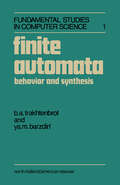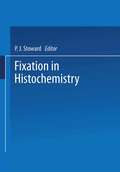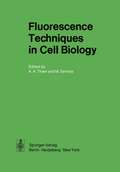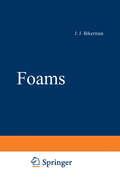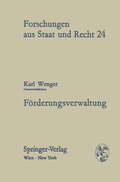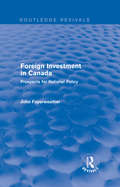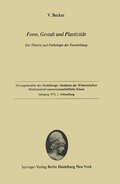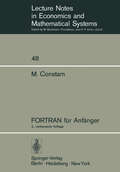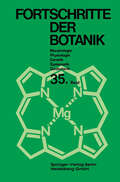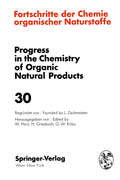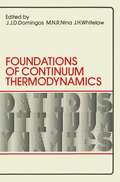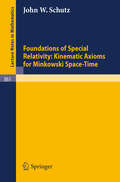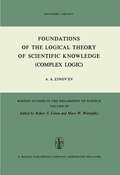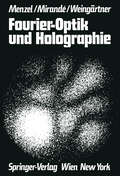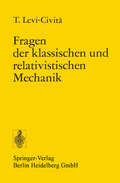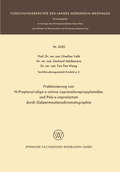- Table View
- List View
The Film Business: A History of British Cinema 1896-1972 (Routledge Revivals)
by Ernest BettsFirst published in 1973 The Film Business makes a factual survey of British films from their beginnings in 1896 to 1972. Ernest Betts offers character studies of men who have built the film industry and made it what it is. He examines the financial and political background and shows how, while intending to encourage film production, it has often had exactly the opposite effect and inhibited its free development. Betts also attacks the manner in which the American film industry has taken over the British film industry and points to the failure of successive governments to save it from repeated crises and losses. Through these fluctuations the author keeps a firm eye on the film itself and brings the judgement of film critics past and present to bear on British cinema, as it moves uncertainly and not without its triumphs into the 1970s. This is an interesting read for students and scholars of film studies, British film history and British cinema.
The Film Business: A History of British Cinema 1896-1972 (Routledge Revivals)
by Ernest BettsFirst published in 1973 The Film Business makes a factual survey of British films from their beginnings in 1896 to 1972. Ernest Betts offers character studies of men who have built the film industry and made it what it is. He examines the financial and political background and shows how, while intending to encourage film production, it has often had exactly the opposite effect and inhibited its free development. Betts also attacks the manner in which the American film industry has taken over the British film industry and points to the failure of successive governments to save it from repeated crises and losses. Through these fluctuations the author keeps a firm eye on the film itself and brings the judgement of film critics past and present to bear on British cinema, as it moves uncertainly and not without its triumphs into the 1970s. This is an interesting read for students and scholars of film studies, British film history and British cinema.
Finite Automata: Behavior and Synthesis
by A. de VriesThis dictionary supplies associations which have been evoked by certain words, signs, etc. in Western civilization in the past, and which may float to the surface again tomorrow; for however 'daringly new' a modern use of imagery may look, it generally appears to have roots in what has been said and done in the past. No fine distinctions have been made between symbols (in the limited sense), allegories, metaphors, signs, types, images, etc. (not to mention 'ascending' and 'descending' symbols), since such subtle distinctions, however sensible from a scientific point of view, are useless to a person struggling with the deeper comprehension (and thus appreciation) of a particular 'symbol'.
Fixation in Histochemistry
by P. J. Stowardby by Professor Professor A. A. G. G. Everson Pearse Pearse The tide of of the Symposium, at at which the the papers which compromise this volume were presented, is ofthe utmost importance. It was not 'Fixation and Tissue Destruction' or 'Fixation 'Fixation and and Loss Loss ofTissue Components', Components', but but 'Fixation and and Tissue Tissue Preservation'. Historical Historical fixatives, fixatives, some some still still with with us us in the field oflight oflight microscopy microscopy after after over over 100 100 years, are are not not less less guilty guilty than than the the new new historical 'fixatives' of of ultrastructural ultrastructural practice practice some some ofwhich of which remove up up to to 60% 60% ofthe of the material material originally present in in the specimen and and convert the remainder into chemically inert products. There There must must be be few few histochemists histochemists who who do not not appreciate appreciate the great need need for for improve improve ments ments in in the the practice practice of of fixation, fixation, but but whence whence can can we we hopefully hopefully expect expect the arrival arrival of such such improvements? improvements ? Apart Apart from from out out ofthe ofthe blue, or revolutionary, revolutionary, advances advances such such as as the advent advent of of glutaralde hyde, there are perhaps three principal sources.
Fluidic Applications: Course held at the Department of Hydro- and Gas-Dynamics, October 1970 (CISM International Centre for Mechanical Sciences #60)
by Guido BelforteFluidic Sensors and some Large Scale Devices: Course held at the Department of Hydro- and Gas-Dynamics October 1970 (CISM International Centre for Mechanical Sciences #52)
by B.E.A. JacobsFluorescence Techniques in Cell Biology
by Andreas A. Thaer Manfred Sernetz.For there to be progress in science, there must first be communication between experts of different disciplines. This is particularly true of modern biology which is becoming more and more of an interdisciplinary field. The present situation in cell biology clearly reflects this devel opment and demonstrates that the application of physical techniques was necessary before this field of biological research could be developed on an objective and quantitative basis. The utilization of optical phenomena as measuring parameters at the microscopic level has provided the basis for the development of quantitative cytochemistry. This rapidly growing extension of conventional cytochemistry and histochemistry is based on the visual oberservation of qualitative chemical criteria in correlation with the microscopically resolved structure of cells and tissues. Furthermore, the introduction into cytochemistry of such optical measuring techniques as ab sorption photometry, interferometry, and fluorometry, as well as the measurement of optical anisotropy, diffrac:tion and scattered light, has provided the methodological bridge for the ex change of knowledge between cell biology on the one hand and biochemistry, or molecular biology, on the other.
Foams (Applied Physics and Engineering #10)
by J.J. BikermanThe book Foams: Theory and Industrial Applications, written by the undersigned and three collaborators and published in 1953, is still the only monograph on liquid foam in the English language. Naturally the science of foams had advanced in the intervening years so that a practically new book had to be prepared to give justice to the present state of our know ledge. This monograph has only one author and does not deal with solid foams, fire-fighting foams, and flotation, on which information is available elsewhere. The other applications of foam and its fundamental properties are reviewed at length and, whenever possible, attempts are made to reach the truth through a maze of conflicting evidence. February 1973 J. J. BIKERMAN Contents page Preface . v 1. General. Foam Films (Sections 1-22) 1 Foam Films 5 References 30 2. Formation and Structure (Sections 23-42) 33 Dispersion Methods 33 Condensation Methods 51 Foam Structure 59 References 62 3. Measurement of Foaminess (Sections 43-62) 65 Films and Bubbles 66 Foams. 76 References 94 4. Results of Foaminess Measurements (Sections 63-84) . 98 Poorly Foaming Liquids . 98 Strongly Foaming Liquids 108 Other Systems 132 References 140 5. Three-phase Foams (Sections 85-90) 149 References 157 6. Foam Drainage (Sections 91-106) 159 Experimental Data . 173 References 181 7. Mechanical Properties of Foams (Sections 107-122) 184 References 211 8. Optical Properties of Foams (Sections 123 -127) . 214 References 222 vii viii Contents 9.
Förderungsverwaltung (Forschungen aus Staat und Recht #24)
by Karl WengerReferaten gingen die meisten der hier veroffentlichten Beitrage hervor. Nach der Zusammensetzung der Referenten und Autoren ist der Band »Forderungsverwaltung" sowohl ein Beispiel fUr fruchtbare Zusam menarbeit an der Universitat tatiger Wissenschaftler und theoretisch interessierter Praktiker als auch ein solches interuniversitarer Zu sammenarbeit auf interdisziplinarer Basis. Die miihevolle Arbeit der redaktionellen Koordination der ein zelnen Beitrage wurde von KARL WENGER vorgenommen. Dafiir sei ihm an dieser Stelle herzlich gedankt. GUNTHER WINKLER Inhaltsverzeichnis Seite AbkiirzungsverzeidlOis XIII Einleitung 1 Erster Teil Zum Subventionsbegriff Karl Wenger: Funktion und Merkmale eines verwaltungsremtlichen S- ventionsbegriffes 1 S. I. Die Bedeutung eines operationalen Subventionsbegriffes fiir eine aktua- tatsbezogene verwaltungsrechtliche Theorie . 15 1. Unzulanglichkeit bloBer Formalkriterien fiir die rechtstheoretische Durchdringung der Leistungsverwaltung . 15 2. Zunehmender Anteil finanzieller ForderungsmaBnahmen am Inst- mentarium der modernen Verwaltung 18 3. Spezifische Erfordernisse eines juristischen Subventionsbegriffes . 20 4. Kriterium fiir den Subventionscharakter auBerlich unterschiedlich bezeichneter Verwaltungshandlungen 21 5. Logische Struktur eines verwaltungsrechtlichen Subventionsbegriffes 24 II. Merkmalschema eines verwaltungsrechtlichen Subventionsbegriffes 25 1. Subventionszweck 25 2. Subventionsverhaltnis 30 3. Subventionsgeber . 32 4. SubventionsempHinger 34 5. Subventionsmittel 38 III. Zusammenfassung und Ergebnis . 42 Dieter Bas: Gedanken zum Subventionsbegriff in den Wirtsmaftswiss- smaften 43 I. Einige typische Subventionsdefinitionen 43 II. Methodologische Fragen . 46 III. Elemente der Subventionsdefinition Inwirtschaftswissenschaftlichen Untersuchungen . 49 1. Definitionselemente von der Seite des Subventionsgebers . 50 2. Definitionselemente von der Seite des Subventionsempfangers . 51 IV. Die Subventionsdefinitionen in der volkswirtschaftlichen Gesamtrechnung 53 V. Zusammenfassung 54 Hans Georg Ruppe: Steuerbegiinstigungen als Subventionen? 57 I.
Foreign Investment in Canada: Prospects for National Policy (Routledge Revivals)
by John FayerweatherThis title was first published in 1973: Why do some states enact stronger pollution control progammes than others? And, do stronger controls have identifiable impacts on environmental quality in these states? This work seeks to answer these question by means of combining data, methods and theory from the natural and social sciences.
Foreign Investment in Canada: Prospects for National Policy (Routledge Revivals)
by John FayerweatherThis title was first published in 1973: Why do some states enact stronger pollution control progammes than others? And, do stronger controls have identifiable impacts on environmental quality in these states? This work seeks to answer these question by means of combining data, methods and theory from the natural and social sciences.
Form, Gestalt und Plastizität: Zur Theorie und Pathologie der Formbildung (Sitzungsberichte der Heidelberger Akademie der Wissenschaften #1973 / 1)
by Volker BeckerForschungsbewußtsein in Österreich: Studie des Instituts für empirische Sozialforschung Ges.m.b.H. im Auftrag des Bundesministeriums für Wissenschaft und Forschung (Veröffentlichung des Bundesministeriums für Wissenschaft und Forschung)
by Hertha FirnbergForschungsökonomie: Stand und Entwicklung (Veröffentlichung des Bundesministeriums für Wissenschaft und Forschung)
by Franz H. Haslinger Karlheinz Hietler Gerhard O. OroselDie Okonomie der Forschung ist eine sehr junge, vielfach noch auf Wahr scheinlichkeitsaussagen beruhende Wissenschaft. Die wissenschaftliche Auseinandersetzung mit Entscheidungs-und Effizienz determinaten im Bereiche der F orschung und Entwicklung ist jedoch von zentraler Bedeutung fur die Forschungspolitik. Die kritische Dimension der Forschungsakonomie hat bisher erhebliche praktische Auswirkungen gezeitigt und die Entwicklung von der "naiven" Forschungspolitik zu der "pluralisti schen" Forschungspolitik, die die gesamte Komplexitat des sozialen und wirtscha/tlichen Innovationsprozesses zu erfassen versucht, wesentlich mit bedingt. Der zunehmende Einsatz affentlicher Mittel fur Forschung und Entwicklung findet seine Rechtfertigung nur im Beitrag der wissenschaftlichen Erkennt nisse zur Erreichung gesellschaftlicher, wirtschaftlicher, sozialer und kul tureller Ziele. Fur eine so verstandene Forschungspolitik ist die Okonomie der F orschung wesentliches wissenschaftliches Rustzeug. In diesem Sinne mage die vorliegende Studie als Beitrag und als Stimu lierung zur Weiterentwicklung dieser jungen Wissenschaft verstanden werden. Es verbleibt, den Autoren fur die unterzogene Muhe zu danken. Dr. Her t h a Fir n b erg Bundesminister fur Wissenschaft und F orschung 5 Vorbemerkung Zie! der vorliegenden Arbeit ist es, einen knappen Dberblick tiber die wesentlichsten, in der Literatur ausgeftihrten Probleme zum Thema "Oko nomie der Forschung" zu geben und diesem eine moglichst ausfUhrliche Bibliographie zur Seite zu stellen. Dabei ist es leider unvermeidlich, dag die AuswahI der behande!ten ArtikeI und Probleme nicht frei von Willktir ist. Die Autoren haben sich bemtiht, alle TeiIgebiete des Themas, die in den Textbtichern tiber den Problemkreis behandelt sind,zumindest anzureigen und daruber hinaus den Kern der wichtigsten ArtikeI wiederzugeben.
Fortschritte der Botanik (Progress in Botany #35)
by Heinz Ellenberg Karl Esser Hermann Merxmüller Eberhard Schnepf Hubert ZieglerFortschritte der Chemie Organischer Naturstoffe / Progress in the Chemistry of Organic Natural Products (Fortschritte der Chemie organischer Naturstoffe Progress in the Chemistry of Organic Natural Products #30)
by M. J. Cormier H. Flasch B. Franck K. Hori L. Jaenicke W. Keller-Schierlein H. D. Locksley D. G. Müller J. Polonsky R. Tschesche J. E. Wampler G. WulffFoundations of Special Relativity: Kinematic Axioms for Minkowski Space-Time (Lecture Notes in Mathematics #361)
by J. W. SchutzFoundations of the Logical Theory of Scientific Knowledge (Boston Studies in the Philosophy and History of Science #9)
by A.A. Zinov'evBoston Studies in the Philosophy of Science are devoted to symposia, con gresses, colloquia, monographs and collected papers on the philosophical foundations of the sciences. It is now our pleasure to include A. A. Zi nov'ev's treatise on complex logic among these volumes. Zinov'ev is one of the most creative of modern Soviet logicians, and at the same time an innovative worker on the methodological foundations of science. More over, Zinov'ev, although still a developing scholar, has exerted a sub stantial and stimulating influence upon his colleagues and students in Moscow and within other philosophical and logical circles of the Soviet Union. Hence it may be helpful, in bringing this present work to an English-reading audience, to review briefly some contemporary Soviet investigations into scientific methodology. During the 1950's, a vigorous new research program in logic was under taken, and the initial published work -characteristic of most Soviet pub lications in the logic and methodology of the sciences - was a collection of essays, Logical Investigations (Moscow, 1959). Among the authors, in addition to Zinov'ev himself, were the philosophers A. Kol'man and P. V. Tavanec, and the mathematicians and linguists, S. A. Janovskaja, A. S. Esenin-Vol'pin, S. K. Saumjan, G. N. Povarov.


